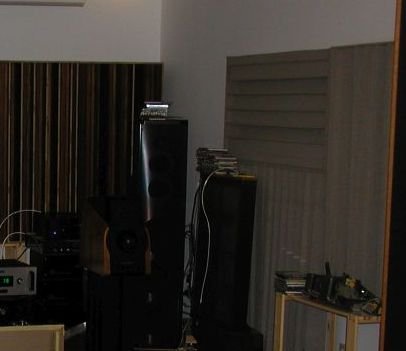My reading of the study cited above is reflected room energy determines apparent image spaciousness. That's a good starting point with universal agreement. The difference between Toole and Giessinger is that Giessinger says that reflected energy less than 50ms does not directly increase spaciousness. Whereas Toole's research demonstrates that listeners prefer untreated first reflections. The first reflections will almost always be less than 50ms behind the impulse.
...
Lest I sound like a broken record on Mch sound, I think the answer is clear. In spite of quibbles about Toole vs. Giessinger, the path to improving the qualities of spaciousness and envelopment is already there in discrete Mch recording and playback. With proper setup of your home system, the recording engineers basically do this for you via discrete Mch recordings.
The notion that possibly the room dimensions could be increased to provide a necessary amount of delay to provide some fixed "spaciousness" on stereo recordings from 2 speakers is, of course, absurd. The way to do it is to control the room acoustics as usual via treatments and/or EQ, then introduce the appropriate level of delayed sound via discretely recorded surround channels. Those channels via discrete recording are the actual sounds of the delayed, hall reflected sound which are now presented to your ears at playback with the proper delay. This idea simulates what you hear in the real hall quite well, and it has the advantage of being adaptable to recordings in halls of all sizes, shapes and characteristics.
Not to get bogged down or too far off topic, but the center channel adds considerably, well beyond phantom center 4.0 or 2.0 in my experience, to the perception of detail, dimensionality and depth of the important area in the center of the soundstage, where our ears are quite sensitive. The best Mch music recordings contain unique information from that perspective via mikes located there. It is not just a redundant L+R summation.
But, wait, all this and more has been understood and consumer packaged for many years into 5/7.1 channel HT systems, many of which can do a really good job of Mch music playback. Even some $500 AVR's have all the necessary engineering built in, including low end room EQ. Ok, there are many sonic compromises in a $500 AVR, so I am not recommending that, especially not in this forum. But, separate preamp/processors, some like Trinnov well into the $30k range, are basically just an all out refinement of the same engineering notions of how to do Mch sound in 5/7.1 and optionally beyond that into Auro 3D, etc.
Is artificially derived Mch from stereo sources any good from a 5/7.1 system? It is not too bad, and some of my classical listening friends like it a lot. However, I prefer listening to archival performances in straight stereo, as they were recorded, myself.



